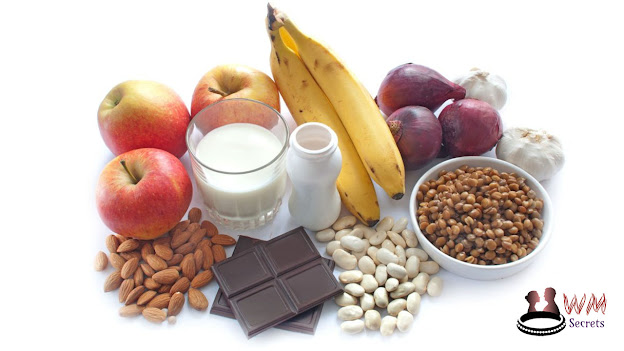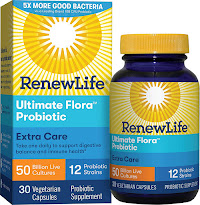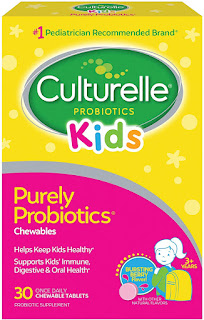Probiotics can have a positive impact on human health. The bacteria living in our intestines are extremely important for our immune system. If our intestines are weakened by an unhealthy lifestyle or taking medication, our immune system sinks. In our Probioticum Test 2020, we dealt extensively with the effects of probiotics and put together extensive background information for you. Our guide will also answer the most frequently asked questions and give you useful information that you should consider when taking probiotics.
The Essentials in Brief
- Probiotics are preparations that contain living microorganisms. These bacteria are natural bacteria that occur in our intestines and have a positive health effect in the intestines.
- Probiotics support the good intestinal bacteria in our intestinal flora and help the body to strengthen the immune system and thus suppress pathogens.
- Probiotics are available in different dosages: tablets, capsules, powders, and even in liquid form. This makes them suitable for all ages.
Probiotic test: editors' favorites
- The best probiotic in capsule form
- The best high-dose probiotic
- The best probiotic for children
The best probiotic in capsule form
Dr. Formulated Probiotics Once Daily Women’s is a unique “just one capsule a day” shelf-stable probiotic. Once Daily Women's is a specifically designed vegetarian supplement with a high probiotic count to support a healthy microbiome and women’s specific health needs.Dr. Perlmutter created this unique formula with a high count of beneficial probiotics made from diverse strains, including Lactobacilli and Bifidobacteria, that are resistant to stomach acid and bile, exclusively for women’s digestion, immune system health.
David Perlmutter, M.D., is an expert in the human microbiome, a board-certified neurologist, Fellow of the American College of Nutrition, America’s brain-health expert and #1 New York Times, a best-selling author.
The best high-dose probiotic
The best probiotic for children
Culturelle Probiotics Designed to promote ongoing digestive support as well as everyday wellness for every member of the family. All products in our line-up feature Lactobacillus rhamnosus GG (LGG), the #1 clinically studied probiotic strain.†† Digestive Health Culturelle Digestive Health probiotic products are formulated to help restore the natural balance of good bacteria in the intestines to help your digestive system work better and keep you feeling your best.* Balancing your Gut Microbiome can start today. Pro-Well Be proactive with smart choices today to support your health tomorrow. Taking a Culturelle probiotic for everyday wellness helps promote your daily health and wellness routine.* Kids When your kids have occasional tummy troubles or when you just want to help keep them healthy, reach for the children's probiotic brand most recommended by Pediatricians.††† Our line-up of safe probiotic supplements can help keep your little ones feeling their best. Baby Your baby’s first two years are critical in building a strong foundation for a lifetime of good health. With safe and gentle products designed to work naturally with your baby’s body, Culturelle Baby products are formulated to help promote your baby’s developing digestive and immune systems supporting your baby for the best possible start.
Purchase and evaluation criteria for probiotics
So that you can compare the different probiotics, we have put together a few criteria for you to consider when buying a probiotic:
- Bacterial strain / culture-forming unit
- Form of administration
- storage
- Suitability & side effects
- Prebiotic
- Additives / allergies
- Aim of treatment
Bacterial strain / culture-forming unit
Probiotic supplements contain several million to billion viable bacteria. The majority of these supplements contain lactic bacteria and bifidobacteria. These should occur in sufficient numbers with their sub-tribes.
You can recognize a good probiotic by the number of different strains of bacteria it contains. Because the more strains the preparation contains, the more effective it is.
The intestinal flora of an adult consists of 100 million bacteria with 100 to 500 different strains.
The culture-forming unit, or KBE for short, also shows how many billion bacteria contain a probiotic. In your search, you will come across products with 5 to 50 billion KBE's. 5 to 10 billion CFUs are sufficient for daily food supplements, and more for serious complaints.
However, you take more CFUs with non-gastric acid-resistant probiotics than arrive in the gut. Therefore, the KBE numbers for products such as powder preparations are significantly higher than for preparations that are resistant to gastric acid.
Form of administration
There are different forms of probiotics: powder, capsule, tablet, and liquid.
Many people, especially children, find it difficult to swallow tablets or capsules. In this case, powdered or liquid probiotics offer a great alternative. These can be easily mixed into drinks or dishes, which also makes dosing significantly easier.
Probiotics are also sometimes offered as chewable tablets. Because of their taste, they are particularly popular with children. However, they often contain additives such as flavors.
storage
Probiotics are living organisms. So that these remain viable, you have to pay attention to a few factors when storing them.
Do not take your probiotic with a hot drink.
As with many other medications, the same applies here: store in a dry and cool place. This ensures that the preparation does not lose its effectiveness before the expiration date because many probiotics are very sensitive to heat.
A place without direct sunlight and moisture is sufficient in most cases. However, some preparations must be stored in the refrigerator. It is therefore essential to pay attention to the label or the package insert.
Probiotics that need to be stored in the refrigerator are unsuitable for traveling or on the go.
Suitability & side effects
When choosing the right probiotic, suitability also plays a major role. For example, a probiotic for children should be dosed lower than that of an adult.
For children, 1 - 3 billion cultural education units (KBE) are sufficient. Even people with sensitive intestines should prefer to use probiotics with lower CFU's.
Children, babies, adults - there are different probiotics that are suitable for different requirements and age groups.
You should also always be aware of the side effects. Before you choose, get enough information about the risks and side effects that probiotics have. It's best to get advice from a pharmacy. Here you get all the important information.
Prebiotic
Prebiotics are indigestible fiber such as the sugar molecules inulin and oligofructose. These are used primarily by bifidobacteria as food.
They enter the intestine undigested and are used as food by the lactic acid bacteria. A prebiotic thereby helps the growth and settlement of the bacteria.
This makes it difficult for bacterial strains like E. coli to spread. Prebiotics feed the healthy intestinal bacteria.
So if you want to make the most efficient choice, you should choose a probiotic with a prebiotic.
Synbiotics are a combination of probiotics and prebiotics.
Additives / allergies
When choosing a probiotic, you should always look at the ingredient list. Your probiotic should be labeled as a non-GMO so that no genetically modified soy or corn is used in the production.
You should also pay attention to allergens such as milk and gluten, especially if you have an intolerance.
If you suffer from histamine intolerance, you must not take probiotics with the strains of the Lactobacillus case, because they form histamine.
Aim of treatment
Depending on the complaints you want to treat with probiotics, different strains offer remedies for different clinical pictures. If you want to treat something specifically, you have to make sure that the correspondingly effective bacterial strains are included.
Here are a few examples:
As you can see, different strains have different positive effects on your body. Depending on which goal you want to achieve, you have to choose special strains of bacteria.
It is advisable to take probiotics with a wide variety of bacterial strains, as these offer a broader spectrum of activity.
Counselor: Questions to think about before you buy a probiotic
In our guide, we have summarized all the important information about probiotics. This will give you a better picture of the effectiveness and scientific aspects of this topic. We want to help you get as much information as possible so you can make an informed choice when buying a probiotic.
What is a probiotic and how does it work?
A probiotic (ancient Greek: “for life”) refers to a preparation that contains intestinal friendly bacteria. In the intestine, the probiotics mimic the function of the naturally occurring bacteria in order to compensate for an imbalance or lack of different microorganisms.
Our intestines are home to countless bacteria and other organisms. These help with digestion and modeling the immune system.
Factors such as stress, poor nutrition, antibiotics, medication, and various diseases can disrupt healthy intestinal flora. This can cause unpleasant symptoms such as diarrhea and the immune system can be weakened.
Most probiotics contain lactobacteria and bifidobacteria. These are said to have a health-promoting effect. They are taken to regenerate the intestinal flora. The more balanced the intestinal flora, the stronger your immune system. Below we show you what probiotics can do.
Fight against pathogens
Our body fights against pathogens every day. The bad and pathogenic viruses, fungi, and bacteria can only be combated if there are enough "good" bacteria, i.e. probiotics, in the body.
Probiotics help your body stay healthy.
Colon cleansing
The intestine is freed from fermenting residues by supplying lactobacilli and bifidobacteria. In addition, probiotics can form a protective shield on the intestinal mucosa. This prevents harmful substances from getting into the intestine or blood.
Break down metabolic toxins
Probiotics are used to eliminate pollutants that arise during metabolism. Probiotics have a direct impact on healthy and disease-causing germs in the intestine and model the immune system.
When and for whom is taking a probiotic useful?
You can take probiotics if you want to alleviate various diseases or to prevent diseases and strengthen the immune system. A healthy intestinal flora strengthens the immune system.
Probiotics are suitable for all ages - from babies to old age.
Children in particular benefit from a healthy intestine, as they have a lot of germs in their environment, on the playground, in kindergarten or at school. Probiotics help to strengthen the immune system and ensure that diseases occur less often and for longer.
 | ||||
|
Probiotics are also suitable for babies, especially if they are not breastfed since probiotics are normally ingested through breast milk. In un breastfed babies and toddlers, probiotics help regulate the intestinal flora and strengthen the immune system.
There are probiotics, especially for children and babies.
A 2015 study by the Italian Society for Neonatology also showed that the use of probiotics during pregnancy and in infancy can prevent skin inflammation.
Of course, probiotics are also suitable for adults. Here they are often recommended after antibiotic therapy or generally help to maintain a healthy intestine. There are even probiotics for dogs and cats.
Which strains of bacteria are in probiotics?
The most common are lactobacteria and bifidobacteria with their sub-strains in probiotics. Bifidobacteria can be found throughout the digestive system, whereby they can prevail in the large intestine. Lactobacteria, on the other hand, predominates in the small intestine.
Did you know that up to 25% of the intestinal bacteria in adults and up to 95% in infants are bifidobacteria?
This is because bifidobacteria is found in breast milk.
But also Streptococcus and Escherichia Coli are natural intestinal inhabitants and are therefore also used in probiotics.
The most common strains of bacteria are:
Lactobacillus:
- acidophilus
- reuteri
- rhamnosus
- plantarum
- gasseri
Bifidobacteria:
- longum
- bifidum
- breve
- infantis
Streptococcus:
- thermophilus
Lactic acid bacteria (Lactobacillus) are the most commonly used organisms. There are more than 100 different types here.
Is a probiotic with E. coli or Bacillus bacteria dangerous?
The bacterial strain E. Coli Nissle 1917 is one of the most intensively studied bacterial strains of our time.
It is not particularly dangerous for people that it naturally occurs in our body. E. coli promotes the production of certain antibodies and thereby helps the body to stimulate the immune system.
E. Coli Nissle is used to treat diarrhea in adults, young children, and infants and is said to help against chronic constipation.
 |
| The E. coli bacterium is found in very large quantities in the human intestine. The healthy E. coli strains such as the Nissle 1917 make it difficult for pathogens to penetrate. |
Bacillus bacteria, however, are only found in small numbers in the human intestine. They can help protect against gastrointestinal infections. A 2015 study found that Bacillus Subtilis helps to strengthen the immune system in older people.
However, there are a large number of Bacillus strands that carry genes for various toxins and antibiotic resistance.
Despite their confirmed efficacy, you should be careful when using Bacillus strands probiotics, especially if your immune system is weakened. Because then the Bacillus bacteria can trigger gastrointestinal problems.
What types of probiotics are there?
When looking for a probiotic that is right for you, you can choose between four different types. We have put together all the advantages and disadvantages of the individual variants. We want to make your purchase decision easier for you.
Probiotic tablets
In addition to bacteria, probiotic tablets often consist of sweeteners such as oligofructose and release agents such as cellulose.
As a rule, they are very long-lasting and easy to store. They are particularly popular because they are easy to take, have no taste, and are pre-dosed.
advantages
- Long durability
- Cheap
- Predosed, neutral taste
disadvantage
- Swallow tablet
- Filler
- Allergens
However, it is difficult to manufacture tablets with enough living bacteria in their manufacture. For this reason, there are often more culture-forming units in other dosage forms.
Many people also have a problem swallowing tablets.
Probiotic tablets also often contain ingredients that can trigger allergies and intolerances such as fructose, soy, and milk.
Be sure to look at the ingredients before buying, especially if you suffer from intolerance.
Probiotic capsules
Probiotic capsules are a good alternative to tablets. Their dosage form enables a higher number of culture-forming units.
Many capsules are also available as a synbiotic. That means the probiotic and prebiotic are in one. Prebiotics promote the growth of bacteria in the intestine and thus support the probiotics.
There are also many capsules available on the market that are resistant to gastric acid. This really gets all the bacteria in the gut.
advantages
- A high number of culture-forming units
- Available as a synbiotic
- Gastric acid resistant
disadvantage
- To swallow
- Animal gelatin
However, many capsules are coated with animal gelatin, which makes it unsuitable for allergy sufferers and vegans. Compared to the tablets, the capsules don't last as long.
There is also again the problem with swallowing. If you cannot swallow tablets or capsules, you should choose a different form of probiotic.
Liquid probiotic
Liquid probiotics contain many viable bacteria. The bacterial cultures can be up to 100 billion germs per 100 milliliters.
It is very easy to take because you can simply take the liquid probiotic with water. Therefore, it is also suitable for children. Many liquid probiotics are enriched with fruit, herbal or medicinal plant extracts, which should help to positively influence the environment in the intestine.
advantages
- A lot of bacteria
- Easy to take
- taste
disadvantage
- Short shelf life after opening
- Cool storage
- Added sugar
However, many liquid probiotics can only be kept for a few weeks or months after opening. They usually have to be stored at cool temperatures of up to 7 degrees.
In addition, liquid preparations usually contain sugar.
Powdered probiotic
Powdered probiotics are easy to store and easy to take. You can easily dissolve it in liquids and even add some to your food. This means that a powdered preparation is also suitable for children.
The powder also makes dosing much easier than with a capsule or tablet, since you can simply dissolve the desired amount in a glass of water.
advantages
- Easy to take
- Can be combined
- Easy dosing
disadvantage
- Additives
- less effective
However, probiotics in powder form mostly contain additives and are less resistant to stomach acid. As a result, fewer bacteria ultimately arrive in the intestine than with other dosage forms.
What does a probiotic cost?
Probiotics are available at different prices. Depending on the quality, quantity, and dosage form, the price of a probiotic can vary between € 10 and € 130 per 100 grams.
Some manufacturers sell their probiotics at a price per kilo of € 40 to € 70.
Probiotic capsules are most often sold, so you can benefit from a large selection here.
If you find it difficult to swallow tablets or capsules, you can easily fall back on the liquid or powdered form.
Where can I buy probiotics?
You can get probiotics in pharmacies, health food stores, and online shops. According to our research, these are the most popular online stores where customers have bought probiotics:
- Essential Probiotics
- Amazon
- shop-apotheke.com
- Lucky Vitamin
Be sure to inform yourself about the individual risks and side effects before you buy them. If you are not sure, it is best to get personal advice in a pharmacy.
How do I dose a probiotic?
So that you can benefit from the positive effects of a probiotic, you should take it daily for a period of at least eight weeks.
According to the Federal Institute for Consumer Health Protection and Veterinary Medicine (BgVV200), a preparation with 100 million to 10 billion bacteria should be used.
If you have a sensitive intestine, you should use preparations with lower values.
Probiotics rarely have side effects, so the dosage is quite unproblematic. In order to get your body used to the probiotic and to avoid possible side effects, you can increase the dose slowly.
It could look like this:
Here is the most important thing:
- It is best to take the preparation on an empty stomach, so the bacteria can pass through the stomach quickly.
- Take it at most 30 minutes before your meals, preferably at breakfast.
- If you have never taken probiotics before, start with a small amount and gradually increase them.
- Products with gastric juice resistance can be taken at any time.
Of course, you should also always read the package leaflet. This also gives you information about a safe dosage.
What are the alternatives to the probiotic?
Probiotics are living bacteria that you can find in addition to food supplements in probiotic foods.
These are foods that naturally contain probiotic bacteria. These include:
- Natural yogurt: is one of the best probiotic foods because it is fermented by lactic acid bacteria. Natural yogurt is said to improve the intestinal flora and to help with constipation and diarrhea.
- Kefir: Like natural yogurt, it also contains lactic acid bacteria but also yeast. As a result, it contains many probiotic bacteria. Kefir is also said to help with digestive problems and to have an anti-inflammatory effect.
- Kombucha tea: is made from the Kombucha mushroom. This is then added to sugared black or herbal tea. Fermentation produces acetic acid and lactic acid. Kombucha is said to have a digestive effect.
However, probiotic bacteria are also used in other forms:
- “Functional Foods”: Here bacteria are added to foods to achieve positive effects on the body, such as smoothies with probiotics
- Cosmetic products: There are, for example, creams that are made with probiotic organisms.
Other probiotic foods include sauerkraut, kimchi, tempeh, apple cider vinegar and apple cider vinegar, cheese, and miso. In this video you will find detailed instructions on how to make your own Kombucha:
What are the risks and side effects of probiotics?
The European Food Safety Authority (EFSA) has some strains of bacteria such as Lactobacillus (L.) fermented and L. reuteri, Bifidobacterium (B.) animals, B. breve, B. longum and B. bifidum as general thanks to their long and safe use classified as safe.
However, critics emphasize that there is still insufficient research on the risks and side effects.
According to a 2018 study, the overuse of probiotics can lead to bloating, abdominal pain, and confusion.
Theoretical risks have also been described in the case of reports, clinical studies, and experimental models. These theoretical risks include systemic infections, harmful metabolic activities, excessive immune stimulation, and gastrointestinal side effects.
However, more research needs to be done to correctly define and confirm these risks.
Who are probiotics unsuitable for?
It is always safest to contact your doctor before taking probiotics. This can tell you exactly whether the intake is risk-free for you.
You shouldn't take probiotics if:
With a weakened immune system, such as after an organ transplant. One often takes immunosuppressive drugs after such an intervention. In this case, you shouldn't take probiotics
In the case of colonization of the small intestine. In this case, taking excessive probiotics can make your problem worse.
How long should I take a probiotic?
Generally, there is no prescribed intake period. The duration of the intake depends entirely on your complaints. On average, however, one can say that probiotics are taken for 4 to 12 weeks.
In the case of chronic symptoms, probiotics can also be used permanently.
It's best to talk to your doctor or pharmacist. They can advise you well about the recommended duration of intake.
What symptoms can I treat with probiotics?
In many studies, probiotics are attributed to various healing effects. In this part, we have put together some diseases for which probiotics can relieve the symptoms.
Allergies, asthma and skin diseases
Probiotics regulate the intestine, which strengthens your immune system. This also makes you less prone to allergies, such as skin allergies.
A study from 2012 showed that taking probiotics from Lactobacillus bacteria can prevent neurodermatitis in children between 2 and 7 years of age.
In addition, a 2019 study supports the hypothesis that probiotics could be helpful in the treatment of asthma.
Food intolerance
Probiotics can alleviate food intolerances such as gluten or lactose intolerance (16).
The probiotics keep the intestinal flora healthy, which protects the intestinal mucosa from the so-called leaky gut syndrome.
Did you know that leaky gut syndrome can trigger various chronic diseases and food intolerances?
In leaky gut syndrome, the barrier function of the intestinal mucosa is said to be disturbed so that toxins and bacteria from the intestine enter the bloodstream.
A study from 1997 found probiotics to have a healing effect on food allergies.
Irritable bowel syndrome
People with irritable bowel have a very sensitive bowel. Probiotics can inhibit the growth of harmful germs and at the same time strengthen the intestinal barrier.
This means that probiotics offer a good therapy option for irritable bowel syndrome. Several studies have shown the therapeutic effects of probiotics.
Cancer screening
There are studies that link probiotics to cancer screening. Promising results have been found in some studies. However, more human clinical trials need to be performed to get more meaningful results.
So probiotics are not yet used as an alternative therapy for cancer control and preventive care.
Mental health
Probiotics can have positive effects on mental health, as a study found in 2016.
In addition, probiotics can modulate cognitive health and neurotransmitters in the brain to counteract an age-related reduction in cognitive function.
High cholesterol
Probiotics, especially lactobacteria and bifidobacteria, can raise good cholesterol (HDL) and lower bad cholesterol (LDL). This can improve your cholesterol level.
What are the benefits of probiotics in colon cleansing?
If the intestine gets out of balance, there can be unpleasant consequences: diarrhea, bloating and constipation can occur. Various factors can lead to an imbalance:
- unhealthy diet
- Taking antibiotics
- Infections
A probiotic cleanse your intestines by cleaning them and removing harmful substances. This will get your digestion going.
Colon cleansing is often recommended after antibiotic therapy to restore balance in the intestine and usually consists of 3 steps:
- Colon cleansing
- Removal of pollutants
- Structure of the intestinal flora
Probiotics are used in step 3. After colon cleansing and cleansing, healthy bacteria must be reintroduced into the intestine.
How does a probiotic help with lactose intolerance?
People who suffer from lactose intolerance often lack an enzyme called lactase. If milk products are consumed, the milk sugar must be digested with the help of lactase. If there is very little lactose in the small intestine, the milk sugar remains unchanged in the large intestine and there are complaints such as diarrhea or abdominal pain.
A probiotic with a high number of lactic bacteria can help here. The lactic acid bacteria produce beta-galactosidase in the intestine, which can improve the tolerance of milk sugar.
They also support digestion and regenerate the intestinal flora.
Can I lose weight more easily with a probiotic?
A study from 2018 found that dietary supplements with synbiotics led to weight loss and sometimes an anti-inflammatory effect.
Synbiotics are a combination of probiotics and prebiotics, whereby prebiotics have a growth-promoting effect on the bacteria.
However, opinions are divided here. Various studies have found little change in weight loss with probiotics.
The topic is still controversial, further studies have to be carried out.
Can and should I take probiotics during antibiotic therapy?
Yes, probiotics can and should be taken during antibiotic therapy.
Antibiotics help kill dangerous bacteria, but they cannot differentiate between good and bad bacteria. This means that antibiotics can also attack important intestinal bacteria.
To support the intestinal bacteria and to maintain the balance in the intestine, you should also take probiotics at the same time during antibiotic therapy.
With probiotics, you can avoid the side effects of antibiotics, such as diarrhea.
Can I take probiotics during pregnancy?
Probiotics have been classified as safe for pregnant women. While there is no clarity on how much probiotics can be taken, over 100 different studies have shown no evidence of negative effects.
 |
| Taking probiotics during pregnancy or breastfeeding is safe in moderation. Studies have even shown that the intake has positive effects on the unborn child. |
On the contrary, taking probiotics during pregnancy or breastfeeding can prevent or minimize the risk of atopic eczema in children.
It was also found that probiotics can help prevent atopic dermatitis in newborns.








Post a Comment